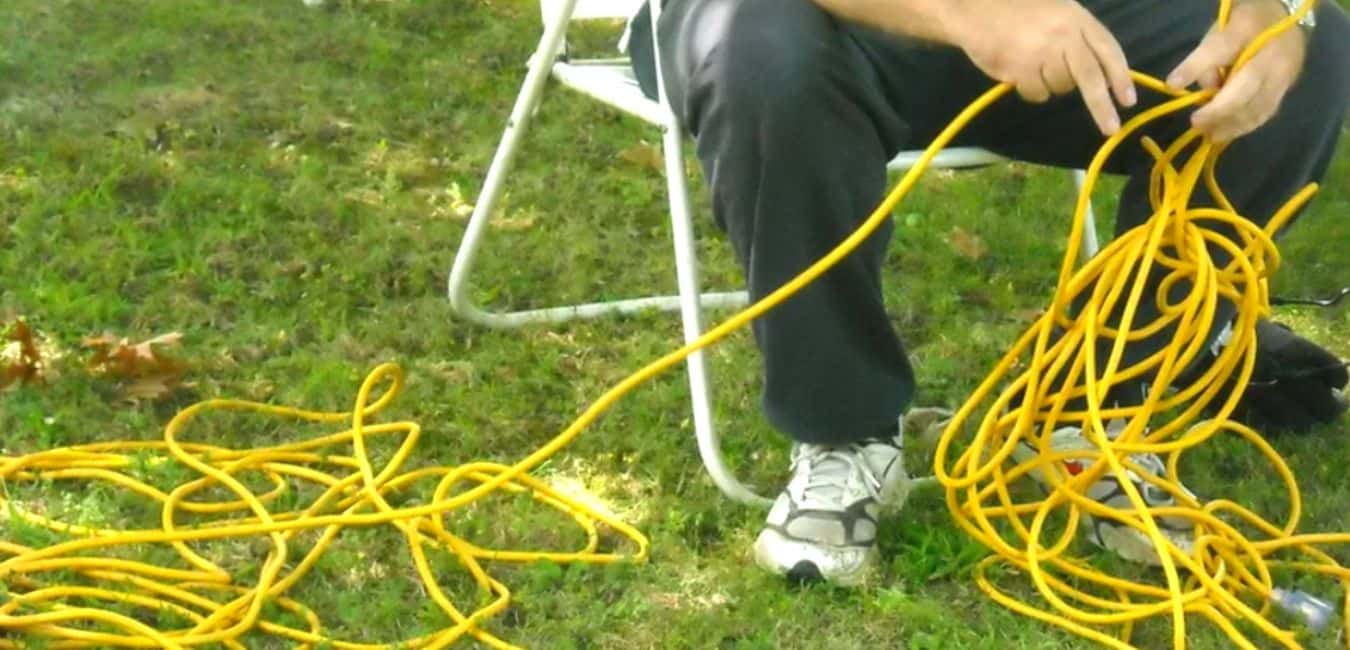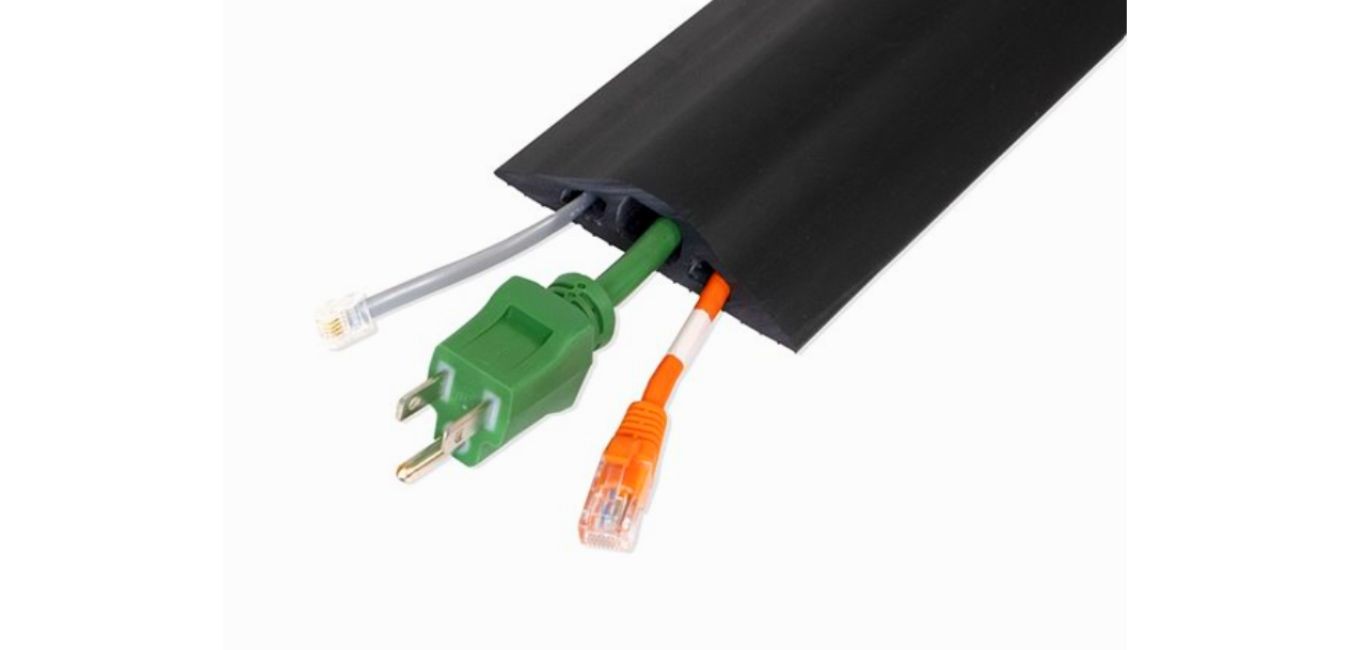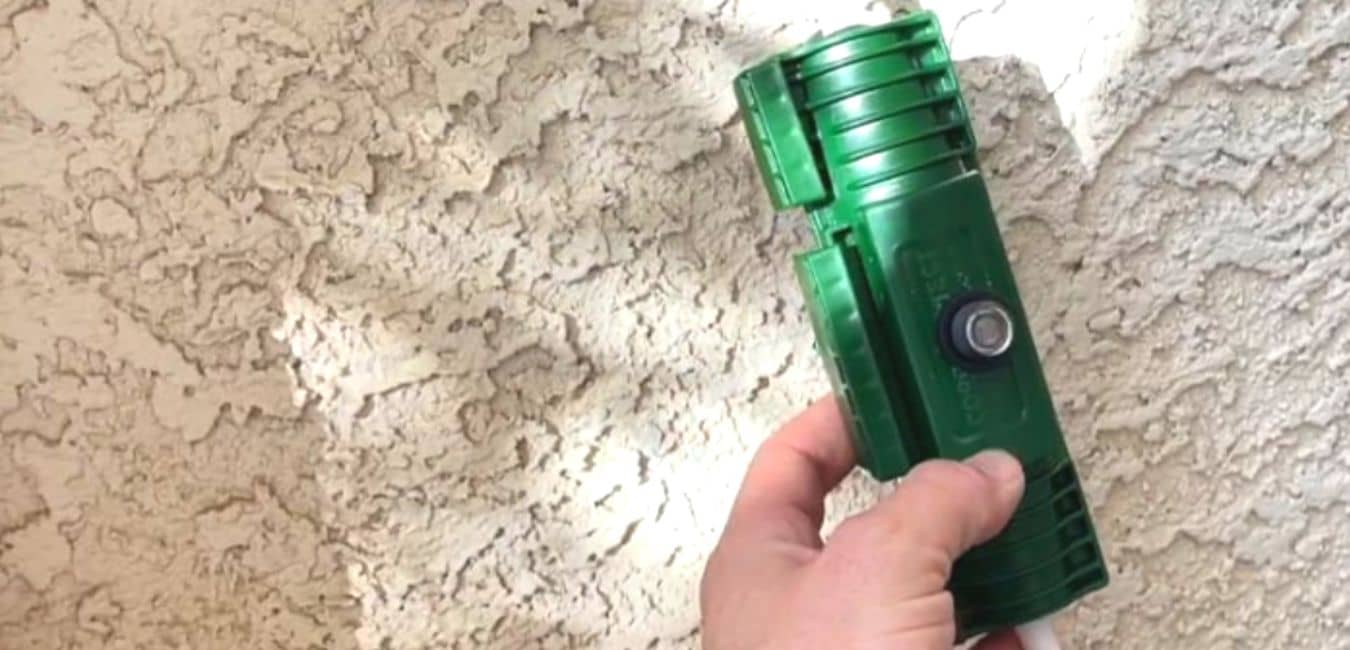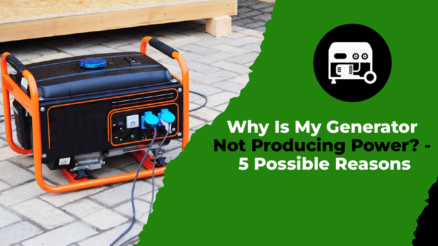Maybe you like to work on tasks that require electric power and hence the usage of extension cords outdoors quite a bit. You’re also highly aware of the dangers and want extra precautions to avoid harming yourself or your family.
If it starts to rain, the idea of electrocuting yourself undoubtedly makes you want to give up on the endeavor altogether or at least gives you the willies. The first tuning that comes to mind is how to protect the outdoor extension cord from rainy DIY. Not to add that despite being considered a simple topic, electrical wires outdoors might be scary.
Well, don’t worry because, in this article, we’ll discuss the best ways to cover extension cords outside so that you may work or utilize extension cords with confidence. When working outdoors or using electrical wires while exposed to the weather, paying attention to these suggestions can offer you the comfort you need. Additionally, we shall learn more about an ostensibly straightforward topic.
So if you’re ready to shield your outdoor extension cord from rain, then let’s dive into the article.
How To Keep Extension Cords From Getting Wet?
The cord can be protected by being wrapped in a plastic bag or placing a plastic cord case over it. To keep the cord dry for a time, wrap it with duct tape or sellotape. There are many other ways to keep the cord from getting wet, but these are very simple and effective.
How to Protect Outdoor Extension Cord from Rain DIY?
With these low-tech DIY techniques, you can shield your outside extension from the rain, reducing the risk of electrical shock from water exposure. Additionally, this advice will give you peace of mind regardless of the weather.

Here are a few tested techniques for protecting your outside extension cables from the rain:
1. Power cord shield
Utilizing a power shield is a quick and easy solution to safeguard your extension cable. A container, a sharp knife, and a drill are needed for this quick procedure. It must be possible for this container to conceal the cord’s exposed portions. To put it another way, a lengthy, thick extension cable requires a large container. After deciding on a container that correctly accommodates the cord:
Use a drill to make holes on the container’s opposing sides. Draw the cord as needed after threading the cord via the slots on both sides.
Expand the openings with the knife and fix the containers and the cable appropriately if necessary. The device is shielded from rain and humid weather by the power cord. Avoid using metal tape to hold the cord; use sticky or duct tape instead.
2. Apply cling wrap
When utilizing an outside extension cord, Cling Wrap could be an effective approach to shield your connection from changing weather. Wrap the extension cord’s attached components with plastic. By doing this, you will protect the connection from moisture and avert electric shock. One benefit of using Cling Wrap is that you may combine it with other techniques to provide a stronger defense against heavy rain.
3. Power cord protector use
By utilizing a power cord protector, you may secure your outside extension cable in another straightforward manner. A rubber is required to use this technique. Consider a cycle inlet as an example. Once you have this, cut it open, starting at one end. The cable should then be fed through the tube. If you want to secure the extension cord, you might also require electrical tape.

4. The bucket approach
A shovel and two buckets are required for this technique. The bucket should be positioned on the ground with the entrance facing it. The cord’s connected end should then be placed on the bucket.
The next step is to hide the connection by sliding the other bucket into the one below. To put it another way, slip the second bucket into the hole of the first one to lock it in place.
If the wind is a factor, dig a shallow hole on the floor and place the bucket inside. Make sure it firmly fits in the opening. A straightforward weight may shield the buckets from bad weather or rain.
5. Apply the bottle approach
This technique may be used to cover Christmas lights in addition to safeguarding extension cable connectors. For this procedure, you’ll need a soda bottle, a box cutter or knife, some scissors, and a sharp object to tear through the bottle.
Cutting through the 2-liter soda bottle using this tool, the cut should be roughly half inside the bottle and about 1/4″ about it. Next, using scissors, cut a spherical hole at the slit’s end. Allowing the cord to protrude from the openings, slide the plugs into the bottle.
6. Utilize an extension cord cover
You can easily protect your extension cord from the elements with this technique. Use the bags to enclose your extension wires and connectors, then use electrical tape to keep them from moving.
The bag may also be divided into smaller pieces and used to hide the connections in various places. Electrical tapes are used to affix the tiny plastic bags.
How To Hide Extension Cords Outside?
Extension cables may be hidden on outdoor lines in several methods that don’t make them appear unattractive or unwelcoming. While some might take a little more effort than others to set up, once everything is in place, you won’t even see the mess! This is how:

1. Affix some tape
This choice is really simple and requires no effort. Simply take this tape and wrap your cord with it. The benefit of this approach is that you may choose the color of tape that best complements the style of your outdoor area, making things feel coordinated!
2. Utilizing potted plants
Why not use the fact that people like how beautiful their pots look? A cable should be concealed within the pots. To keep things in top condition, you should fill in any gaps where it is visible with pebbles or other ornamental materials.
Since nobody will ever glimpse what’s below, this technique is most effective if you have a huge potted plant. To make your cables appear to be sprouting from your plants, you may drill a hole at the top of the pot and place them there.
3. Make use of a cable ramp
Although this alternative is a little more expensive, it will make your wires seem buried and professional. Simply, you must purchase a sheet of rubber or plastic specially shaped to fit beneath the legs of your outdoor furniture. These often have openings where your cords may be inserted and are completely hidden!
4. Put PVC pipes underground
You may easily conceal all of your cords inside a P.V.C. pipe if your outdoor location has enough room for one. If there are many cables, this approach works best since they are accessible and won’t knot. Pick up some two-way PVC elbows that can be linked with adhesive or concrete, then trim them into tiny pieces to make them simpler to handle.

5. Make innovative use of your space
Another solution that doesn’t need much effort is this one. Make sure the cables are out of the way by designating spots throughout your outdoor space where you can put them away quickly.
Consider placing it within an umbrella stand, behind a table’s skirt, on top of a table, etc., as some possible locations. To ensure that your cords never rest on the ground, you can hang them up with a few short hooks.
6. Kits for cord covers
You can get many cable cover kits at your hardware shop. The surface is a smooth and secure layer; these cords allow you to run your connection on the interior. Typically, you can choose rubber, plastic, or metal coverings. These kits are functional for as long as your extension cables are in use.
Most solutions are low-profile and less likely to cause tripping over cables. They will help keep trash away, waterproof the installation, and stop animals from nibbling your cables.
Ensure the cover kit has a bottom; if not, you’ll need to lay down a waterproof sheet to keep the underneath of your cords covered. Such kits may be used for a variety of various lengths, they are reasonably priced, and they perform pretty well.
How to Hide the Electrical Cords Outside?
Putting up Christmas lighting and decorations outside can sometimes feel like too many electrical wires, and you’re stumbling over them everywhere. But don’t panic; here we discuss the best ways to hide the electrical cords outside:

1. Removing cords from around doors
Running electrical wires through a doorway might be a big hassle if you have to do it. Frequently, the cable isn’t long enough to wrap completely around the door frame. So how do you cross the threshold with the cable in place without tripping everyone? Plastic tapered shims will hold the cord in position if you tuck it beneath the door sill.
As a result, the rope will be moved out of the way of pedestrians. Additionally, it may be either a short-term or long-term treatment, which is the finest part. It may be quickly taken out, fixed, or uninstalled because it’s only being kept in place by the tapered shim’s pressure.
2. Tucking the cords away from the door
When running wires, it might be quite problematic if they have to pass through a doorway. It frequently happens that the cable isn’t long sufficient to go over, above, and through the entire door frame. What is the best way to cross the threshold with the cable to avoid tripping everyone who comes through it?
With The help of our plastic tapered shims, you can tuck the cord under the door sill, and it will stay in place. By doing this, the cord will remain out of the way of walkers.
The nicest aspect is that it may either be a short-term fix or a more long-term one. It can be readily taken out and changed or replaced because it is only being maintained in place by the push of the tapered shim.
3. Hiding electrical cords under siding
Siding that provides a tiny area below it to tuck away your electrical cables may be beneficial if you need to run a cord around the exterior of your home. But how are they supposed to hide? Just carefully tuck the cables under the siding of your home. Both prevent you from being injured by them and enhance the appearance of your outdoor décor.
How to Protect Outdoor Extension Cord from Rain DIY – FAQs
Here, you’ll find the answer to a few important questions:
Our Verdict
If users are irresponsible and don’t take the necessary precautions, external extension cables might pose an electrical risk. An electrical shock could occur, for instance, if the electrical cord is nailed or otherwise secured to a surface.
Additionally, when operating in poor conditions, extending the wire to its entire length might damage the cord or endanger the users. Using the aforementioned DIY techniques, you can shield your technology from bad weather and avoid electrical dangers like injuries and shocks. We hope you learn how to protect the outside extension cord from rain DIY.
Now you can enjoy the beautiful lightning in the rain on your patio!






